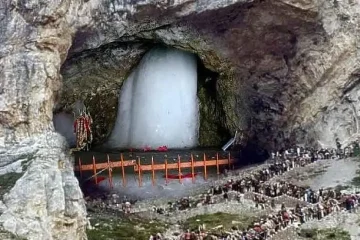Exploring the Spiritual Significance of Tirupati

Introduction
Tirupati, located in Andhra Pradesh, is one of the world’s most visited pilgrimage sites, attracting millions of devotees every year. Its significance comes from the presence of the prestigious Tirumala Venkateswara Temple, dedicated to Lord Venkateswara, an incarnation of Lord Vishnu. The temple is not only a spiritual hub but also holds immense cultural and historical importance, making it a vital part of India’s rich religious heritage.
Historical Background
The history of Tirupati dates back centuries, with references to the Tirumala Temple found in ancient texts like the Puranas. The temple architecture boasts exquisite Dravidian style, reflecting the artistic prowess of earlier civilizations. According to legends, the deity in the temple is believed to have manifested himself in the form of an idol, which is adorned with intricate ornaments that symbolize prosperity and divinity.
Recent Developments
In recent years, the Tirupati Temple authorities have undertaken several initiatives to enhance the pilgrimage experience. The introduction of online booking systems for darshan (viewing of the deity), accommodation, and prasad (food offerings) has made it easier for pilgrims to plan their visits. Moreover, the Andhra Pradesh government has implemented measures to improve infrastructure, including roads and public transportation, to accommodate the increasing number of visitors. Recent reports estimate that the temple sees over 30,000 to 100,000 visitors daily, especially during festivals such as Brahmotsavam, which draws crowds in the lakhs.
Spiritual and Economic Impact
The spiritual significance of Tirupati transcends religious boundaries, as it attracts not only Hindus but individuals from various walks of life seeking peace and solace. The temple’s income, derived from donations and offerings, helps fund various social initiatives, including education, healthcare, and rural development projects, thus playing a vital role in improving the local economy.
Conclusion
As one of the holiest places in India, Tirupati holds a special place in the hearts of many. The city’s continued growth as a spiritual and economic center reflects its enduring legacy. With ongoing infrastructural developments and an ever-increasing influx of visitors, Tirupati is poised to maintain its significance as a pilgrimage destination, enriching the spiritual lives of millions while contributing positively to the regional economy. For those seeking a profound spiritual experience, Tirupati remains a beacon of faith and devotion.









